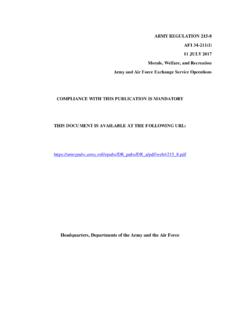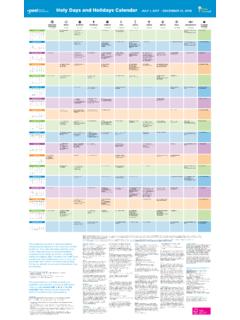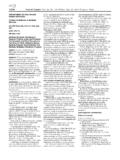Transcription of EY white paper July 2017 - United States
1 EY white paper july 2017 . The allocation game Managing cost before money is spent F Foreword The financial services industry has cut billions of dollars in expenses, and many banks have sought to optimize their business mix in order to increase return on capital or to resolve issues identified in the aftermath of the 2008 financial crisis. During late 2016 and early 2017 banks have seen increases in interest rates and client flows, which have boosted their earnings and, given the anticipated rate-hikes, further growth opportunities are expected. Myopic cost cuts are the cost cutting initiatives that while delivering on short-term reduction targets, typically present three challenges: difficulties in tracking the estimated reductions back to the bottom line, inability to retain the cost savings over long periods of time and the prevention of the recurrence of these same costs upon an increase of business volumes.
2 For example, US banks have cut their branch population since 2009 and further reduced branch This is quite a turnaround for an industry where the top five US- personnel across the board. However, in response to negative based banks by market capitalization have experienced an average customer feedback about long waits, one US bank noted that, in decline in interest-related income of about 19% between 2011 some cases, they had to add branch tellers and bankers back to and 20151. their operations and modify their branch strategy. However, the US banking industry is still facing steep and increasing Stranded costs are those expenses that would not cease to be regulatory requirements and capital needs, while facing off incurred when discontinuing the product or function to which they increasing threats from FinTech firms that are aiming to introduce are related.
3 For example, when closing a trading desk or a retail disruptive technology-enabled business models, and that are branch, there are elements of the cost base that will remain in the currently not subject to the same regulatory standards imposed profit and loss statement ( , office lease, application licenses). to the large banks. Additionally, banks continue to face significant The path to cost excellence under the current industry dynamics costs for fines and litigation, with some institutions spending a few needs to encompass a comprehensive rethinking of the way costs billion dollars in the last three years for this item alone. Financial are managed as opposed to traditional cost reduction levers such institutions need to continue their cost optimization journey and as the elimination of management layers or branches. The largest focus in particular on lowering infrastructure costs to restore European banks have cost-to-income ratios between 62% 119%2.
4 Returns on equity above the cost of capital and free up working Most banks have a long way to go to enhance their efficiency and capital to divert toward investment in products and technology to recover the returns to shareholders. defend and grow market shares. This paper focuses specifically on how banks can improve Three challenges stand in the way of market practitioners achieving management of their infrastructure costs, which account, sustainable cost leadership: on average, for about 40%3 of most banks' entire cost base. Identifying and removing stubborn cost This segment of expense has been traditionally challenging to Avoiding myopic cost cutting understand and difficult to control. The practices described in this paper are examples of ways that banks can cut costs in a sustainable Managing stranded cost way before money is spent through: increased transparency Stubborn costs are the costs that banks incur to continue with a (including identifying and managing stubborn and stranded costs), legacy way of doing business that could be changed through the improved abilities to cut cost without harming growth (including adoption of the latest technologies, methods or standards.)
5 For avoiding myopic cost cutting) and embedding cost management example, despite the advancement of the digital agenda in banking, within business routines as opposed to point solutions. some of the largest institutions are spending about US$1b a year moving cash in armored trucks. Other examples include the cost of replacing credit cards, sending paper statements via post and maintaining a population of plastic credit cards. 1. The allocation game 2. E Executive summary When it comes to managing the allocated cost base, most banks find themselves focused on the academic exercise of cost accounting and allocation rather than an objective of controlling or reducing cost. Cost allocation, as a traditional exercise, seeks to fully distribute the overhead costs of an institution on an equitable basis, and by that process, contribute to determining the profitability of the businesses at a granular level.
6 The process Build sustainable cost management through integration with key business processes (with a focus on the finance function). A. bank's ability to sustain cost management routines is rooted in its ability to embed cost control into business rhythm and cadence, as well as integrate cost allocation within existing key processes such as financial planning, transfer pricing and pricing of critical services ( , living wills) to generate a consistent view and often does not add value beyond that and is geared only to inform understanding of costs within the organization. business units of their share once during the planning season and then again after the money has been spent. We often see this process create significant internal friction due to the lack of cost transparency in particular around consumption data and billing rules. Most banks experience significant workload to investigate and manage allocation disputes, often at a level of minutiae, that is not in keeping with cost reduction objectives nor is relevant when compared to the total cost base.
7 This also distracts the organization from what really matters: optimizing the bank-wide cost base. This paper details EY's views on how banks should shift their focus from distributing incurred costs to proactively controlling costs. We advise our clients to: Lay the foundation for a bank-wide costing orchestration through the definition of common guiding principles within the organization, and facilitate an easier dialogue and improved transparency through a common bank-wide language ( , service taxonomy) that ultimately allows for consistent delivery, avoids duplication of activities between linked but disjointed processes and minimizes the reconciliation effort. Enable actionable cost management through revamping the cost allocation methodology to balance simplicity with the need for fully loaded costs, improving the linkage between drivers and business fundamentals, remediating data quality and optimizing data sourcing, upgrading the technology platform to minimize disruptions to business as usual, and ultimately sharpening cost analytics to cover the entire cost base and shift focus on forward- looking indicators to drive down costs.
8 3. T Table of contents 5 Lay the foundation for a bank-wide costing orchestration Governance #1. Adopt an overarching governance to pursue bank-wide objectives as opposed to silo-based solutions Strategic execution #2. Create a costing center of excellence to orchestrate efficiencies and bank-wide consistency Service catalog #3. Adopt a common taxonomy to improve the dialogue across the organization and focus on bank-wide goals 12 Enable actionable cost management Methodology #4. Balance simplicity and need for cost insights through a tailored costing methodology Drivers #5. Adopt unit costing with allocation drivers linked to business fundamentals Data #6. Refocus annual spending to improve data management at the source as opposed to investing in a series of point solutions Technology #7. Leverage advancements in technology to increase cost transparency while minimizing disruption to current processes Cost analytics #8.
9 Focus on generating actionable insights rather than just reporting numbers 24 Build sustainable cost management through integration with key business processes Financial planning #9. Manage the allocated cost base within financial planning and business reviews Resolution and recovery planning #10. Leverage cost allocation to minimize the pre-funding required for operational continuity Tax and regulatory compliance #11. Factor tax and regulatory constraints into management of shared services to avoid erosion of operational efficiency due to unforeseen tax and legal entity complications. 30 Jump-starting your transformation 35 About the white paper 4. Lay the foundation for a bank-wide costing orchestration 5. G Governance 1. Adopt an overarching governance to pursue bank-wide objectives as opposed to silo-based solutions The single most important change that most banks have yet to accomplish to manage costs is the creation of a consistent language and common standards across the bank.
10 Too often financial institutions deal with an amalgamation of multiple and conflicting taxonomies, different product hierarchies and different account processes, with different definitions for many of the same terms. For example, one institution maintained, managed and End-to-end cost accountability Cost allocation roundtable Senior management sponsorship Clearly defined roles and responsibilities Overarching cost allocation policy The overarching cost allocation policy sets common standards reconciled 55 different definitions of headcount: total headcounts and principles for distributing costs consistently throughout the without contractors, total headcounts without personnel on long- bank. This typically includes an agreement on whether the bank term leave, etc. will adopt a service catalog-based approach to distribute cost, Cost excellence begins with the ability to orchestrate whether costs are fully loaded or only representative of direct cost management from a bank-wide perspective based on expenses and whether the entire corporate cost is distributed or common overarching governance and standards.
















